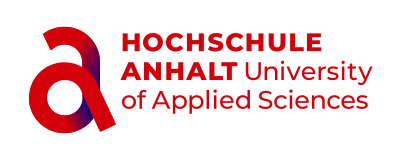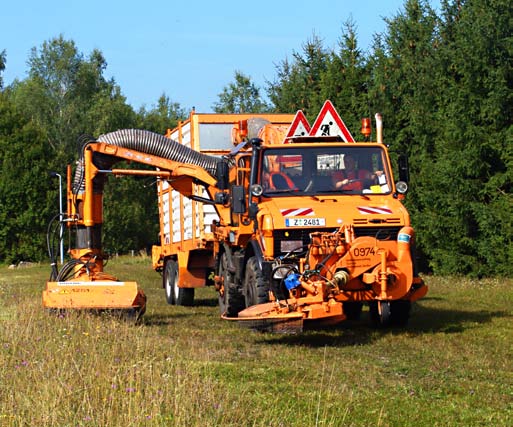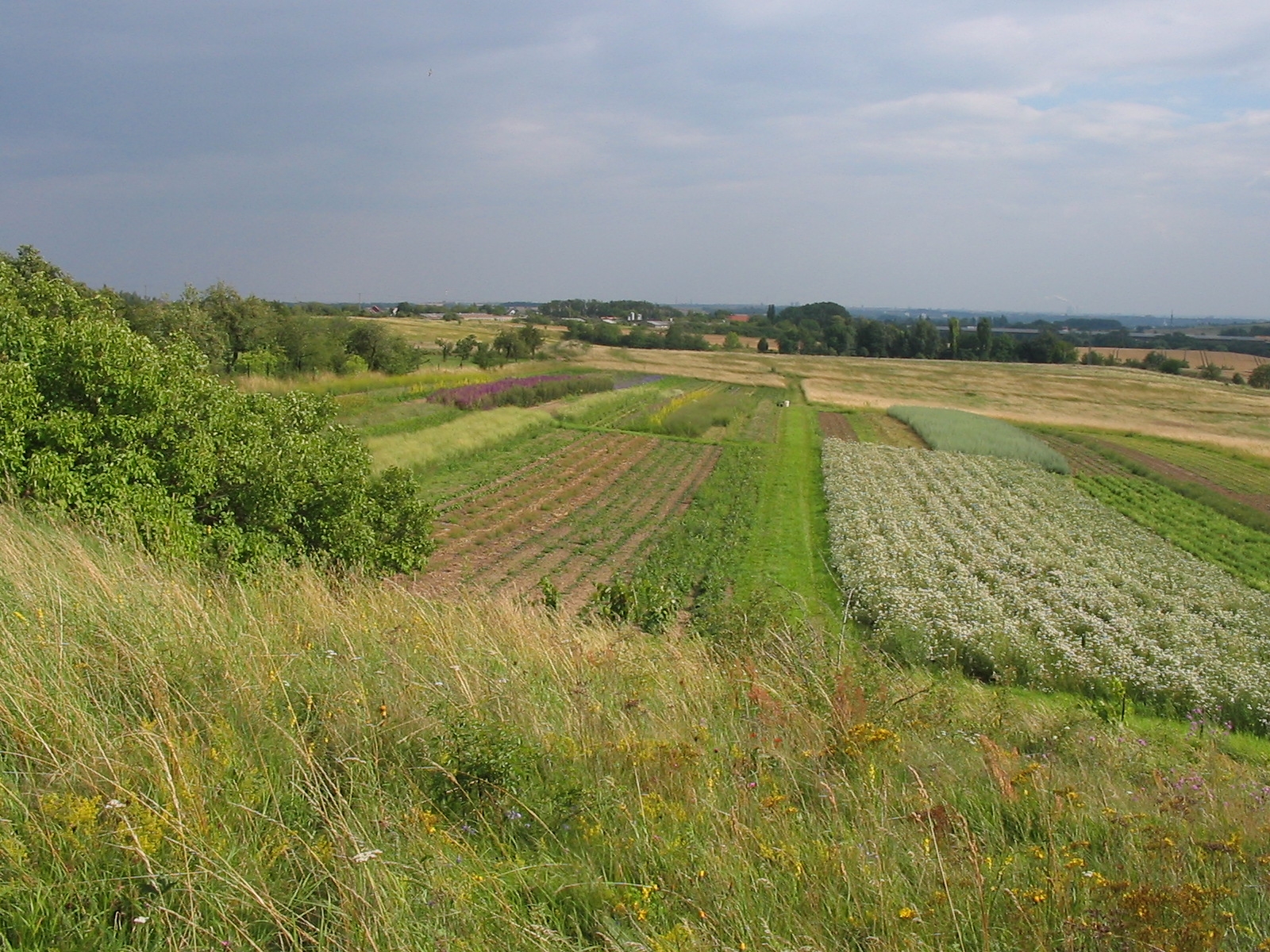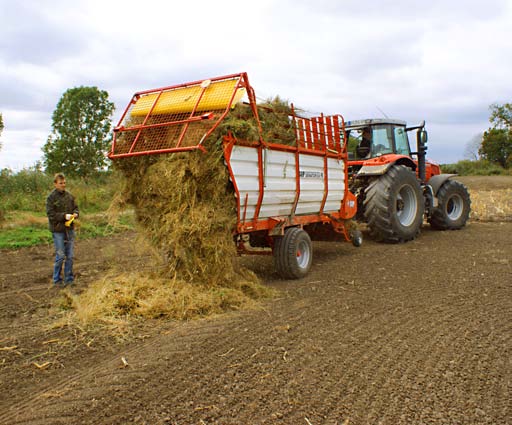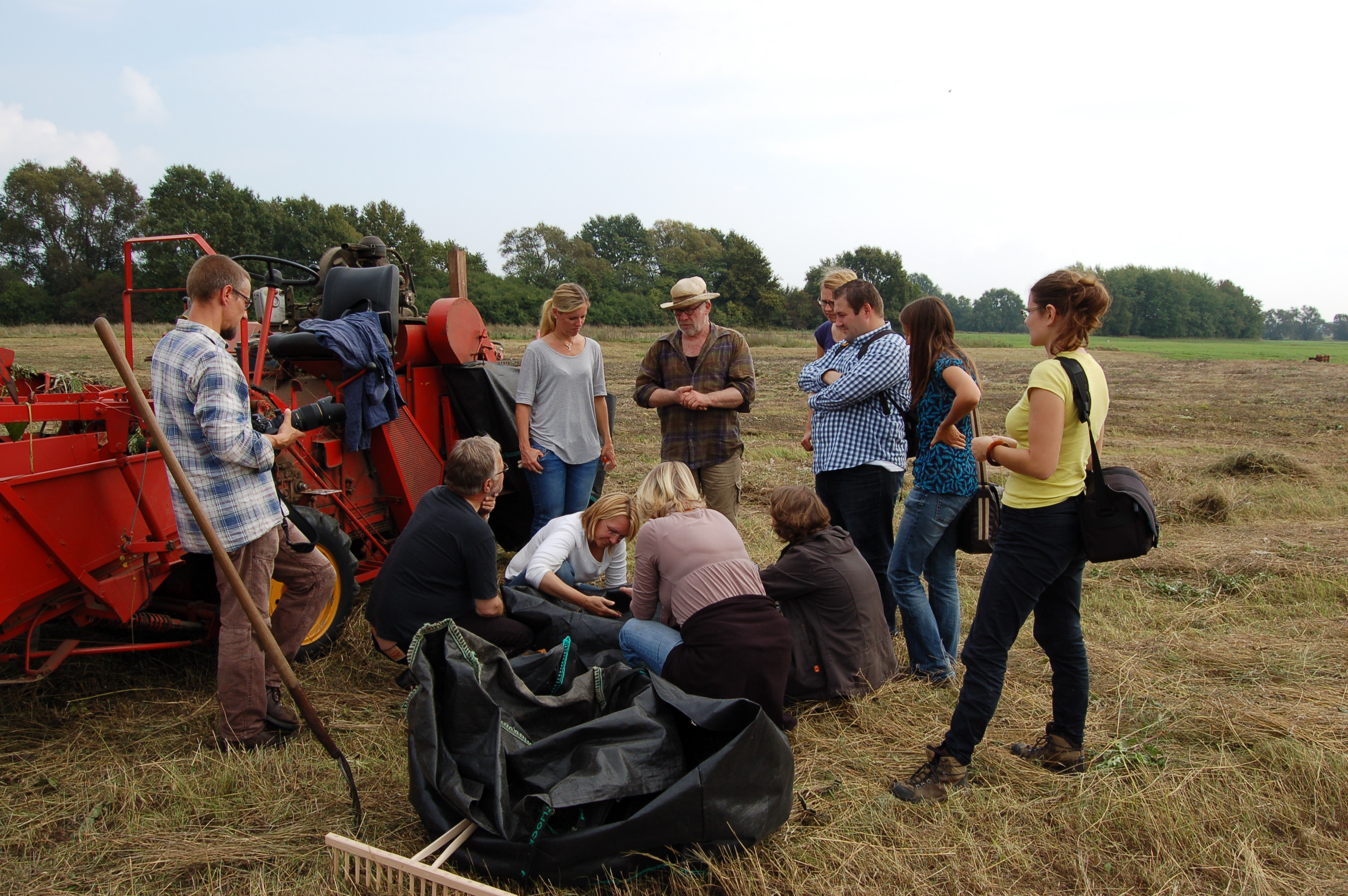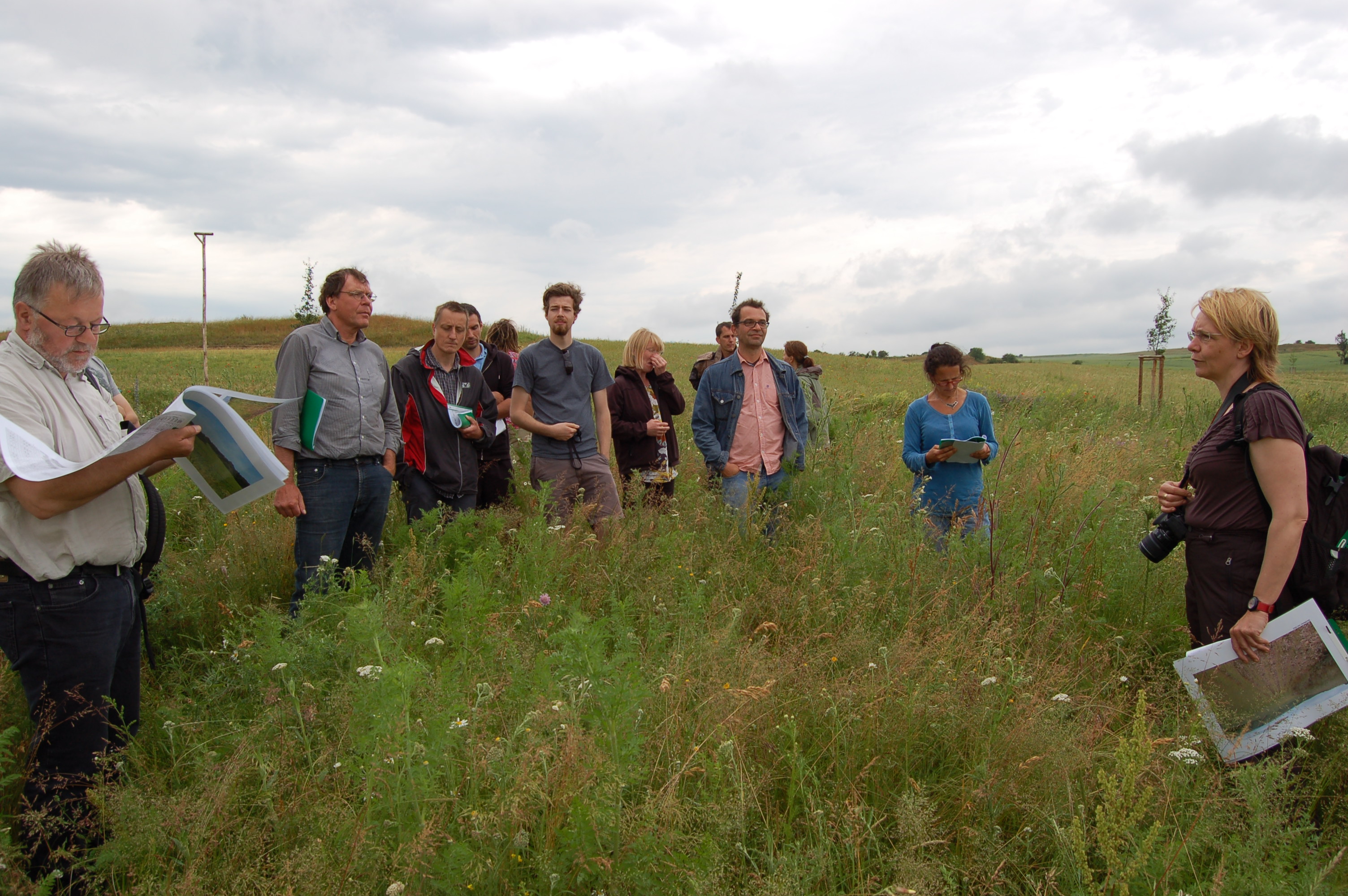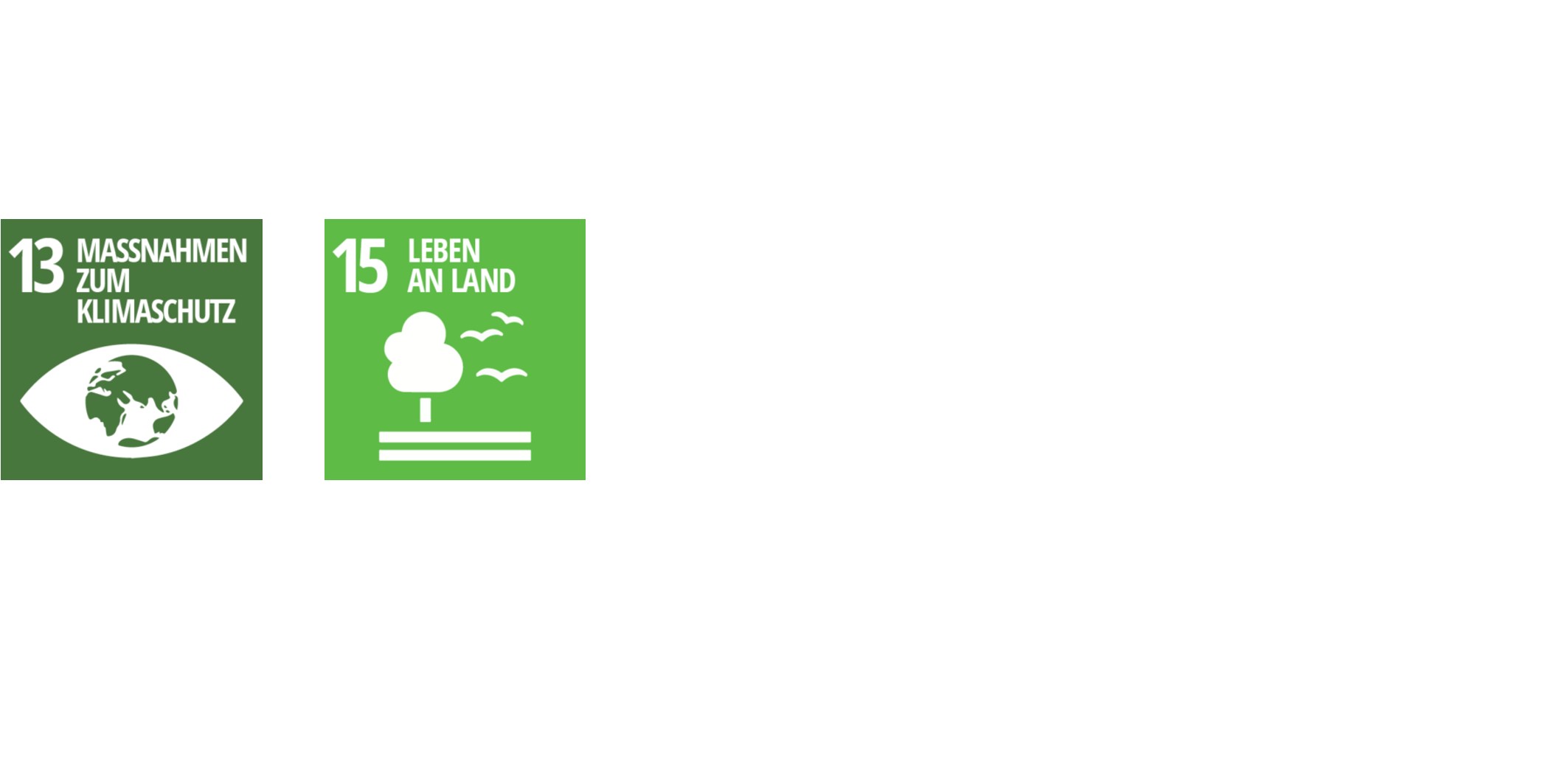Meadows rich in the diversity of their flora and structure have become rare in Saxony-Anhalt, which negativly effects the local fauna. In the past as well as the present, native habitats and species have been impacted and destroyed/displaced by non-native species. To prevent this, the Federal Nature Conservation Act (BNatSchG § 40 Abs. 1) imposes the use of authochthones seeds in the landscape since 01.03.2020. Nature-near greening methods not onle meet the requirement of this law, but also help to achive the goals of the convention of biodiversity (CBD) and the fauna-flora-habitat-directive (FFH).
Nature-near greening methods are defined by the exclusive use of authochthone seed material of native plant species. These are best adapted to the local conditions and therefore increase the probability of reaching the greening goal, while also guaranteing the protection of floristic identities of habitats, promoting biodiversity and providing important ecosystem services, e. g. erosion prevention. Futhermore long-term costs will be reduced due to high success rates, very good bio-engineeric funtionalities and often lower maintannce efforts compared to conventional seed-mixtures.
The donor site register Saxony-Anhalt facilitates the localization of ecological and economical suitable donor sites for directly harvested seed and plant material in Saxony-Anhalt. Therefore, the use of seed material of local origin in compensation and restoration measures will be promoted. In addition, the transnational information system of nature-oriented restoration measures provides comprehensive information for planning and implementation.
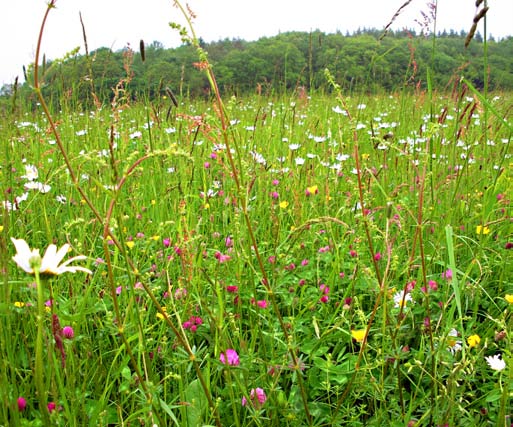
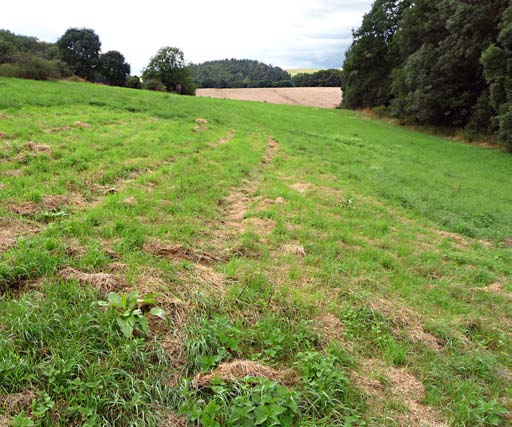
Information system of nature-oriented restoration measures (InB)
Information system of nature-oriented restoration measures (InB)
Arguments against the implementation of alternative restoration methods include: uncertainties, lack of experience and knowledge, high costs, complex success control and the general unavailability of seed and plant material of local origin.
The aim of the information system InB is to promote nature-oriented restoration measures and impart knowledge. The InB is part of the internet website www.spenderflaechenkataster.de. It presents scientific knowledge and practical experiences.
The InB is designed as a transnational information system being extended and updated at regular intervals. Great emphasis is placed on user-friendliness allowing quick searches and ensuring reliable data. The information system presents an overview of different near-natural restoration methods and gives advice for their planning and implementation, as well as for costs and matters concerning the legal framework. Further information is given by a comprehensive list of links to institutions and practitioners as well as an up-to-date bibliography.
Disseminating practical knowledge, e.g. via demonstration workshops for public authorities, planner, communities and contractors aim to reduce reservations against near-natural restoration measures, avoiding mistakes in planning and implementation, thus enhancing restoration success in the future.

Sucking up seeds with a suction mulching vehicle. [Photo: Rene Schubert] 
Propagation of wild plant seeds in the Saalekreis near Halle. [Photo: Matthias Stolle] 
Spreading of cuttings. [Photo: Daniel Elias] pamphlets about natural greening methods
pamphlets about natural greening methods
Here you can find our pamphlets to topics on natural greening methods (only available in German).
1/5 background and planning steps
2/5 transfer of meadow theshing
3/5 transfer of mowed material
4/5 sowing with regional produced seeds and methods of sowing
5/5 natural greening methods in communal space
Donor site database of Saxony-Anhalt
Donor site database of Saxony-Anhalt
The selection of donor sites is based on ecological and economical aspects. Cost-effectiveness is evaluated, e.g. by determination of shrub encroachment, inclination, relief and accessibility. Only sites that are potentially suitable for seed harvest are included in the web-based database. Most sites in the database are protected by nature conservation law and situated in Natura2000 and/or nature protection areas. The listing of an area as a donor site in the database exclicitly does not imply permission for seed collection or harvesting of any other kind. Any kind of harvesting requires a formal authorization by the responsible nature conservation authority and the land user. Most probably, any loss in harvest must be compensated.
Between 2006 and 2014, 406 potential donor sites were integrated in the database. Since then, a consecutively reassessment of these sites is necessary because management deficits can lead to an encroachment of grasses and woody species and therefore to a steady decline of target species. In 2014, for example, 50 sites that were included in the database in 2006 were revaluated, showing that nine sites did not fulfill the requirements for donor sites any more. The reassessment of the sites listed in the database as well as the new inclusion of areas continues. In the past project period, 102 sites have already been revaluated from which 61 optimal donor sites, which are ideally suited for greening measures in terms of their species composition, have been determined. New sites that are potentially suitable donor sites can also be reported online by any user.
The donor site database has multiple search functions. Donor sites can be selected from a map or a list or via a search module. Available ecological and economic data are shown in fact sheets. If interested stakeholders want to see the exact geographical position of the donor sites, they have to register as a user.
Workshops
Workshops
Demonstration workshops are important instruments for knowledge transfer into practice, discussion and networking. We want to break down prejudices against the use of autochthonous seed and plant material in restoration and re-vegetation. Based on specific examples, participants can discuss typical problems and questions and will be presented with possible solutions. Each year, the Anhalt University of Applied Sciences organizes workshops and field trips on different topics in restoration. More information see: www.spenderflaechenkataster.de or Conferences & Workshops.

Workshop October 2014: Explanation of the meadow threshing harvest with a HEGE 125 plot threshing by Matthias Stolle (saale-saaten Halle). 
Exchange of experiences between Landgesellschaft mbH Sachsen-Anhalt and guests of the demonstration workshop in June 2014 on the creation of a species-rich semi-dry lawn on a former arable site in Brachwitz. experiments on the germination of meadow thresh
experiments on the germination of meadow thresh
Since 2017 experiments have been carried out to observe the germination of seeds won through meadow threshing depending on the duration and sort of storage. To accomplish that, the seed matieral from three different site in Bernburg, Wulfen and the south of Harz mountains have each been stored in for different ways:
(a) cooling chamber, non-vacuumized
(b) cooling chamber, vacuumized
(c) barn, non-vacuumized
(d) barn, vacuumized
The germination tests are done twice a year in spring and autumn and will be finished in autumn 2022. At the time of the final experiment the meadow thresh will have been stored for 5 years.
Future prospects
Future prospects
The use of autochthonous seeds in restoration and re-vegetation projects will become more and more important due to the new legal regulations. Necessary knowledge can be found in the information system of nature-oriented restoration measures (INB), where new results in research and practice are continuously integrated.
Moreover, there is increasing need for advice to support the implementation of near-natural restoration measures. With regard to the importance and actuality of nature-oriented restoration measures, the staff of the project offers assistance in the planing, implementation and controll of nature-near (re-)greening projects as well as arrangements with farmers and authorities. All this underlies the constant up-dating and expansion of the donoer-site-database and the care of the information system (InB).
Management: Prof. Dr. Sabine Tischew, Dipl.-Ing. (FH) Sandra Mann
Researchers: B. Sc. Bettina Pleintinger, M. Sc. Lars Huth, B. Sc. Franka Beyer
Title:
Extension and support of the donor area cadastre Saxony-Anhalt and the information system for natural vegetation - Intensification and extension of knowledge transfer for the upgrading and development of valuable FFH open land habitats
Period: 10/2020 to 09/2023 (project 407.1.10-60128/630120000010)
Funded by: European Agricultural Fund for Rural Development (EAFRD)
Project partners: Matthias Stolle (saale-saaten, Halle), Landesanstalt für Landwirtschaft und Gartenbau Sachsen-Anhalt,
Landesforstbetrieb Sachsen-Anhalt, Landesstraßenbaubehörde Sachsen-Anhalt,
Stiftung Umwelt, Natur- und Klimaschutz Sachsen-Anhalt, Landgesellschaft Sachsen-Anhalt mbH
Website: www.spenderflaechenkataster.de

